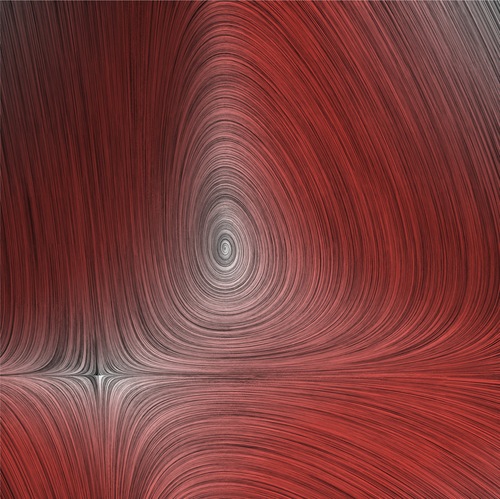|
Art of Science 2013 Online Gallery
«Prev |
Thumbnails |
Next »
|
 Light eddies
Mitchell A. Nahmias (graduate student) and Paul R. Prucnal (faculty)
Department of Electrical Engineering
Fiber optic networks have transformed global communications by moving digital bits of
information around the planet at the speed of light. By combining lasers with artificial
neural networks, it may one day be possible to create high-speed processors that react
to incoming data far faster than current computers could ever handle.
Our brains are composed of billions of individual cells called neurons, which
communicate along millions of billions of channels with electrochemical signals. This
computer model visualizes a laser that behaves like a neuron by plotting a so-called "phase space." Notice that the lines swirl inwards like a whirlpool to converge at stable
equilibrium points, indicating that the laser will stabilize over time. Studying these
trajectories helps us understand how our devices emit and receive pulses of light that
mimic the way in which neurons communicate.
|
|